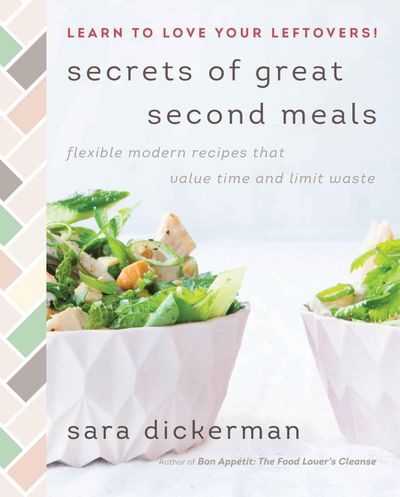How a pot of beans can change the way you think about cooking

A pot of beans: Cooking doesn’t get much more basic than that. Beans might be cute (especially pretty heirloom varieties), and well-made beans make a tasty, cheap side dish. But that seems to be about the extent of it. What are beans going to teach you?
A novice cook can learn a lot from a pot of beans – and while this might sound funny, a more experienced cook can have a lot of fun with one – from Seattle food writer Sara Dickerman’s new “Secrets of Great Second Meals: Flexible Modern Recipes That Value Time and Limit Waste.” Dickerman’s “Lazybones Beans” take four and a half hours (or even overnight) to cook, but only about five minutes to put together. They’ve got a little special stuff thrown in – a chile pepper, a whole head of garlic, herbs – to make them extra-tasty, but they’re basic at heart. It’s where Dickerman goes from there – where she can take you and your beans – that’s interesting.
“WHERE TO PUT YOUR BEANS ONCE YOU HAVE COOKED THEM” shouts a section after the recipe. This sounds funny, too, but what follows makes eminent sense: Dickerman says to use your beans lots of different ways, like, “Simply, as a side dish; Soupily, to add heft to a soup or stew.” I love her neologism “Saladly,” where she says beans would love to be put with “a sharp vinaigrette” and veggies (fresh or cooked), or in a green goddess salad, or a warm bean salad. Some of the beyond-side-dish bean-serving suggestions carry page numbers for specific recipes; some are simple one-liners, like, “Smoothly, blended up with olive oil, lemon juice and garlic” for a hummus-type spread or dip.
“LEARN TO LOVE YOUR LEFTOVERS!” the cover of “Secrets of Great Second Meals” screams, and you can also approach the book from another way around: a handy chart in the back asking “What’s on hand?” Even those comfortable enough in the kitchen to figure out what to do with, say, leftover chicken will probably find something new: Beyond chicken salad or enchiladas, the curious cook is referred to recipes for congee, fritters, a tomato-ginger curry, a “Braise-y Tomato Sandwich” and more. Your beans, according to the table, can take you to Dickerman’s hearty bean soup, veggie tacos and crostini.
It’s the kind of holistic, intuitive approach to cooking that can take a long time to develop on your own. It’s also the kind of approach that can use a little renewal – some fresh ideas, new thoughts – if you’re already there. And even an old friend like beans can be inspiring.
Lazybones Beans
From Sara Dickerman’s “Secrets of Great Second Meals: Flexible Modern Recipes That Value Time and Limit Waste”
1 cup dried beans, such as cannellini
1 teaspoon fine sea salt, plus more to taste
1 small whole dried chile, such as chile de arbol or japones
1 garlic head, top one-third cut off
1 carrot, peeled
3 or 4 thyme sprigs
1 bay leaf
1 tablespoon olive oil
1. Preheat the oven to 275 degrees Fahrenheit.
2. Rinse the beans well; drain; and place them in a 3- or 4-quart ovenproof saucepan with 6 cups cold water, salt, chile, garlic, carrot, thyme, bay leaf and olive oil. Cover the pot, and cook the beans for 4 1/2 hours (when they will be tender) or even overnight (when they will be very tender). You can also use a slow cooker on low for this method; if so, start checking the beans around 6 hours in. (Note that before cooking in a slow cooker, kidney beans should be boiled for 10 minutes, just in case your slow cooker isn’t hot enough to kill a potentially stomach-upsetting toxin, phytohemagglutinin, known as kidney bean lectin.)
3. Taste and season with more salt if necessary. Pluck the thyme sprigs, chile, garlic head and carrot out of the broth, and let the beans cool in their broth. To store, refrigerate beans in their broth in an airtight container after cooling; they keep well for three days, or you can freeze them in their liquid. Strain before serving.
Yield: about 3 cups
Note: You can use both the cooking broth and the cloves from the cooked garlic in soups and bean purees.